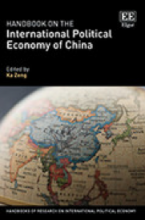“China and the “Belt and Road Initiative” (BRI): Contested multilateralism and innovative institution-building"

What drives China’s Belt and Road Initiative (BRI)? Why did China decide to create new ‘parallel’ multilateral institutions instead of utilizing existing ones to pursue its objectives? This chapter provides a qualitative assessment of China’s multifaceted influence as donor, financer and investor, and more importantly, a new institution designer in BRI countries. By examining China’s Belt and Road Initiative, I argue that China might be challenging aspects of US dominance or preferences in some cases, but is still supportive of the neoliberal international order. Instead of challenging the dominant neoliberal norms, China has sought to build new parallel institutions (by excluding the dominant hegemon) in order to rewrite some rules in line with China’s interests and global vision and to complement the existing system by addressing infrastructure as an issue area that has been downplayed by the existing institutions.
This book chapter appears in Ka Zeng, ed., Handbook of the International Political Economy of China (Cheltenham: Edward Elgar, 2019), pp. 361-376.




